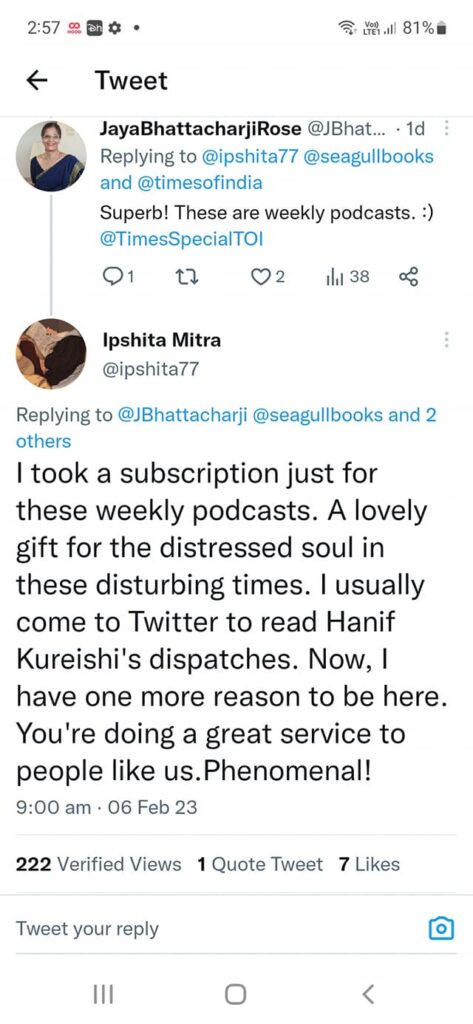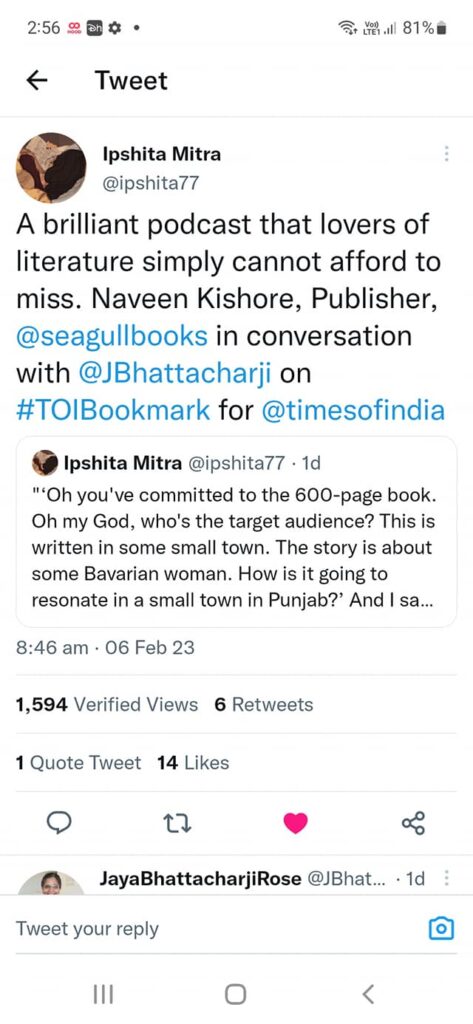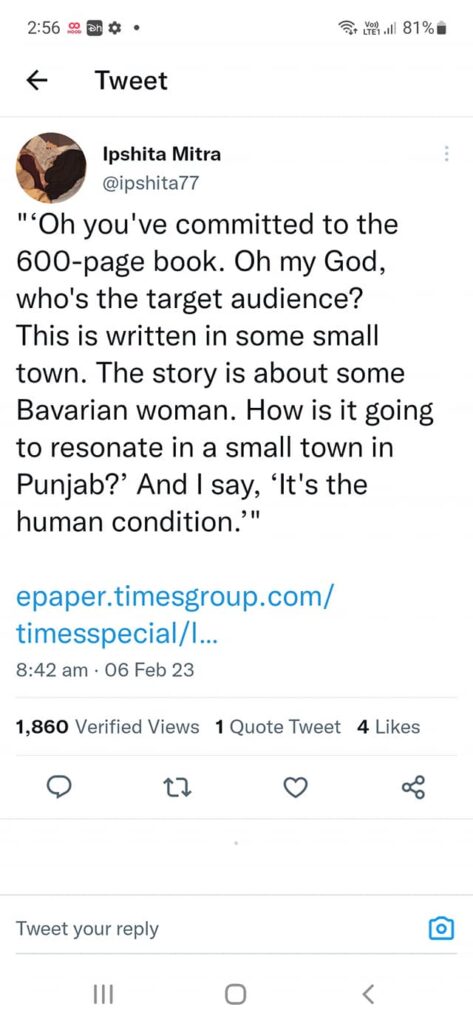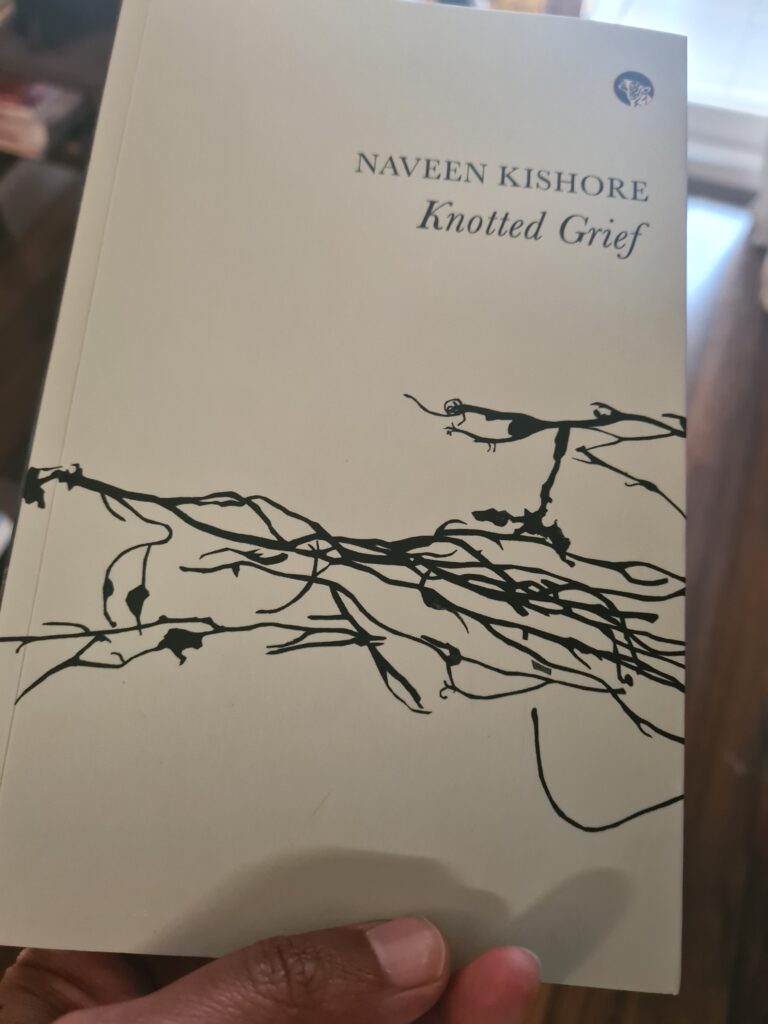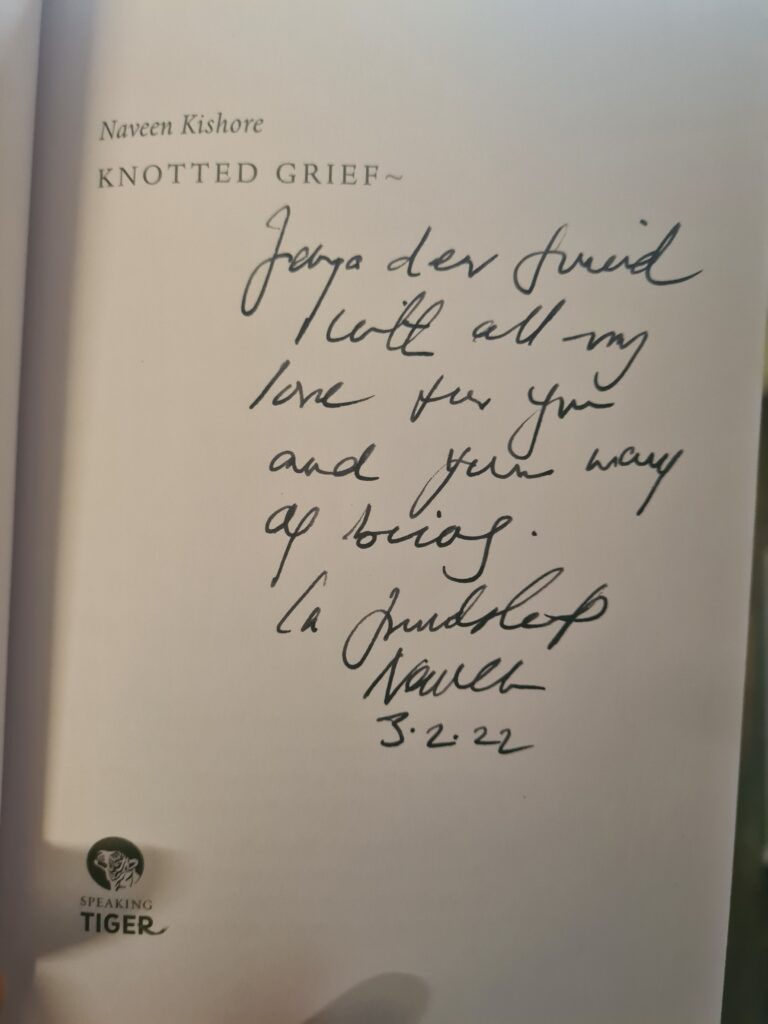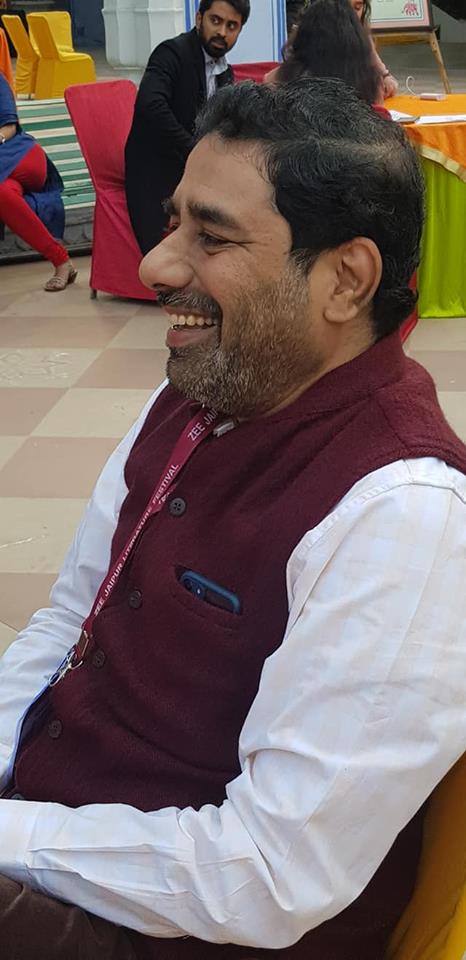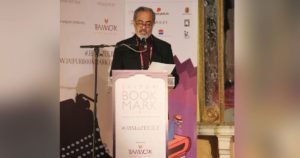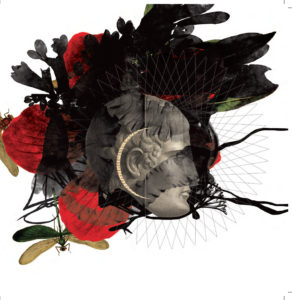 ( From the Goethe Institute website. In an outstanding way and at the highest level, Naveen Kishore represents dialogue and cultural cooperation between India and Germany, according to the statement by the Goethe Medal commission.
( From the Goethe Institute website. In an outstanding way and at the highest level, Naveen Kishore represents dialogue and cultural cooperation between India and Germany, according to the statement by the Goethe Medal commission.
He is the founder and director of Seagull Books in Kolkata, which, with branches in London and Chicago, is established internationally like no other Indian publishing house. The house owns the worldwide English-language publishing rights for authors such as Paul Celan, Ingeborg Bachmann, Jean-Paul Sartre, Thomas Bernhard, Imre Kertész, Yves Bonnefoy, Mo Yan, Mahasweta Devi, Peter Handke and Hans Magnus Enzensberger. Naveen Kishore is led not by the market, but by personal convictions and passions. By launching the German List book series, a collaboration with the Goethe-Institut, he lastingly altered prevailing circumstances for the reception of German-language literature in the English language not only in India, but worldwide. Over the past five years Seagull has acquired the publishing rights to over 60 books from German publishers. Seagull Books is the first to publish German authors such as Brigitte Reimann and Ralf Rothmann in the English language, in carefully edited and excellently translated editions. I am reproducing this speech with Naveen Kishore’s permission. )

I found the words that had escaped.
Rounded them up at gunpoint.
Marched them into the compound ringed by barbed wire.
Knocked them senseless with the butt of my gun.
Watched them collapse into a heap of meaninglessness.
Lit a match.
Flicked it on to the heap.
It took several lifetimes.
But at last I succeeded.
To set the words on fire.
The rising smoke drew across the sky
the meaning of my life.
To write is to delve. To hope. To write is to set off on a journey. There’s no arriving. There’s no ‘getting there’. Just the tramping. The walking. The dust tracks as signs of life. Someone has walked this way before. The reassurance. The comfort of friends. And of course the words. Words as solace. Words as recollection. Incomplete words seeking salvation. Broken words in limbo. Premature ones spewed into the gutter even as they are born. Words without moorings. Or roots. Homeless words seeking shelter from the storm. Good. Bad. Indifferent. Words that act like an opiate. Words that sing a lullaby. Unashamed words. Naked and stripped of veils. Harsh and therefore often truthful words. Words of the people. Words that refuse to die. Or be buried. Fighting words. Words with a cause. Borderline words strutting to a neutral tune. Neither-here-nor-there words. Our words. Their words. Words of attrition. Those that feast on anger and prejudice. Words of war. And those that want nothing but a happy ending.
The freedom of language as we used to know it is under a cloud. The very clouds that we grew up turning into sentences are now under suspicion. Trusting words to mean what they say is no longer an option. Sure, we hear them. Often, we even ‘see’ them as they sway down the ramp of language. Stony eyed and anorexic in their transparent gowns. Unblinking in the harshness of the flashing lights. A dull salute to conformity. Or words in the grip of fear. Wrap your tongue round such a word and you see it thrashing and struggling to slip away. The desire to spit out words is unadvisable. Surreptitious tip-toeing after a cautious glance to the left. The right. Then scurrying across the road to safety That’s the way, today’s way, with words.
I have a disease, I see language. I was reincarnated as a publisher in my eleventh birth. In my tenth, I was born in the land of frostbite in upper Alaska and my mother taught me how to chisel the frost off my words as swiftly as the cold north wind froze them once again. In my seventh, I was a lighting designer, learning to backlight words that other people wrote and spoke. Sometimes, I simply lit the silence and waited, with the empty stage, for the entry of a new sentence.
How do you find your way without a compass or a map? Especially when you have set out to grasp that which is intangible? I say to you what others have said to me:
Let intuition be your compass.
Look for a credible (or incredible) way to slip out of the confines of your head, your brain, your training—to unlearn all that you have learnt.
Why does this magazine page or catalogue or book cover look the way it does? Is the designer in me expected to come up with an answer that will make you gasp with admiration at its insight, its erudition, its grasp of designer theory? YES! I’m afraid so. When you ask me ‘Why?’ I’m often tempted, even compelled, to say things like ‘I was attempting to render through a visual metaphor the metaphysical doctrine of XYZ . . .’ or ‘The poststructuralist theories of something-something ‘. Anything.
The sad thing is that I would never have the guts to simply look you in the eye and say: ‘The air above my head and yours is full of lots of somethings. I’ve just learnt to pull out the odd one and spread it evenly across a page. Like butter. Or jam’.
I would love even more to say: ‘Because . . .‘
I am often asked about ‘sustainability’ and ‘structure’, about ‘vision’ and the ‘ability to reinvent’. I never have convincing answers simply because I have no scientific or rational methods to explain my life’s work and the choices that have come with it. I live hand in hand or hand in glove, and therefore complicitly, with ‘the uncertain’ and ‘the intangible’. With the opposite of ‘structure’. I am aware that I also live in a time that does not lend credence to that feeling at the pit of your belly often referred to as the ‘gut’. Instinct is frowned upon, even in the arts.
Each new engagement brings with it a new insight, both in its execution and with its response. Over the years, this style of working has developed into a strategy that:
a) responds flexibly and immediately to a perceived need, be it that of an individual or a group;
b) cuts through the bureaucracy of thought that usually strangles such a dialogue and acts quickly and decisively to meet it; and, more importantly,
c) refuses to get jaded. Nothing is static. Everything has a dynamic plasticity about it.
This award recognizes my life’s work. My life. And, like life, the work is ever evolving, changing, coping, dying, renewing, responding, sustaining, nurturing . . . The closest I can come to describe the Seagull vision is to say: ‘Think of animation’—not a frozen piece of text nor a well-articulated, expertly crafted, neatly phrased all-encompassing legend that can be engraved on a brass plaque. The Seagull way of life is a mercurial, flexible, broad-minded, tolerant and philosophical practice. We respond, therefore we practice. The urge to keep doing, to keep working away at something that enhances things cultural in some form or the other; that benefits those that practice ‘things cultural’ and helps take them further, from Point A to Point D— that’s what drives us at Seagull. Every day.
Ours is therefore a practice that will always remain vulnerable. Not the vulnerability of the weak but of those receptive to new impressions. Our vulnerability to ideas makes us receptive to all that is new and untried. Especially in these dark times when culture is slowly but surely being hijacked by forces that are anything but benign. I do feel watched in a way I never have before. And I am afraid that a technology that I do not understand is both spying on me and entertaining me. I am under surveillance even as I am seduced by It. The all pervasive It of our lives. The It as State. As a state of mind. As a powerful presence that will have its way. It as Corporation. It as newspapers. As television. As theatre and cinema. It as Media with a capital ‘M’. It as power that knows no boundaries. It without conscience. Yes. It is like listening to music that is both hypnotic and evil. That attracts. That refuses to let go of my attention.
I listen to the songs but I do not understand the words.
The space for our songs is not as free as it used to be.
I have a flaw. I want to do everything. Don’t you wish that you could do everything? Or, at least, a lot of things? I want to experience. I want to be part of a process that has no apparent game plan. I want to be part of something that does. I hate the thought of being restricted. Allow us this day our daily attempts—at anything and everything. Why not?
Underlining all of this is an urge to survive and to do things. Not just any thing but ‘something in the arts’. And this is precisely what we have been doing for the last 40 years or so. ‘Survival’ carries with it a sense of the precarious, a kind of ‘just about keeping your head above water’. This is true but it need not necessarily make you unhappy! As long as you manage to take care of what you define as your daily necessities—the urge to produce a certain kind of book that few wish to buy; or organize an experimental performance because you feel it needs to be seen; or exhibit an artist’s work that needs to see the light of day—the rest will fall into place.
One day I will write something where each word is made up of a million waves and each wave sings its own story and each story sheds its own tears and the tears do what they must to carry on they smile and smiles come bearing the strings that make music and strings quickly learn to caress the bark of the finest violins which in turn play melodies that weave a magic spell over the hearts that beat and throb and every throb breathes new life into words words that bear echoes echoes that sound like the bells that adorn churches bells crafted out of the finest metal safeguarded over centuries for its ability to turn word into sound sounds that are pregnant with words words that bear the seed of silence silence that accompanies stillness stillness as we know is the mother of echo echo that every word carries within it of a life before the birth of language language that was once sensed rather than heard like the morning breeze celebrating a birth the birth of poetry
I am a man of words.
To me, the words matter most of all.
Naveen Kishore
Weimar, August 2013
